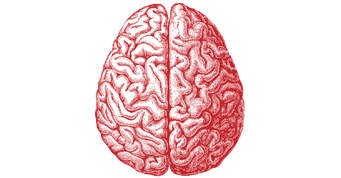Updated Guidelines for Severe TBI Still Have Holes
New guidelines for the management of severe traumatic brain injury (TBI) provide an update of all available evidence and recommendations since the third edition of the guidelines was published in 2007, researchers reported — but, sadly, it lacks answers to many key clinical questions.
A total of 189 publications provided evidence to support 28 recommendations on 18 topics in Guidelines for the Management of Severe Traumatic Brain Injury, Fourth Edition, Nancy Carney, PhD, of Oregon Health and Science University in Portland, and colleagues reported online in Neurosurgery.
Endorsed by the American Association of Neurological Surgeons and the Congress of Neurological Surgeons, the guidelines include 14 new or changed recommendations and 14 unchanged recommendations. Evidence to support seven previous recommendations did not meet current standards, experts said.
Despite major developments in the management of severe TBI, however, the guidelines do not include recommendations in many key areas because of a lack of evidence. As a result, the guidelines should not be considered a complete protocol for clinical use, the authors said.
“Protocols specific to individual clinical environments need to be developed to fill the gaps in evidence-based recommendations,” Carney said. “Clinicians need to call upon their practical experience in the context of their particular environment to derive complete protocols.”
There is insufficient evidence to support the use of hyperosmolar agents to improve outcomes, for example, and yet many clinicians have observed their value in daily practice, she explained: “Until there is evidence for or against this treatment approach, the neurosurgeon or critical care physician needs to make the call.”
The CDC estimates that following the treatment recommendations in these guidelines could double the chances of survival for U.S. patients with severe traumatic brain injury (TBI), increase the proportion of good outcomes for survivors from 35% to 66%, and decrease the proportion of poor outcomes from 34% to 19%, Carney noted.
“They estimated that with 80% adherence to these guidelines nationally, the annual total cost savings would net $4.08 billion,” she said.
The guidelines specify the next steps in the research required to expand the evidence base, but studying individual topics isn’t enough, Carney said. “The research needs to be conducted consistent with the highest standards in order for the results to be used as evidence.”
Critical evidence gaps need to be identified, study designs improved, and state-of-the-art methods used for synthesizing and assessing evidence. In lieu of waiting for better clinical evidence to be produced, a formal consortium could focus on comparative effectiveness research that strictly adheres to evidence-based protocols rather than randomized controlled trials and observational studies, the authors proposed.
A fifth edition of the guidelines will not be forthcoming. Instead, “Living Guidelines” will use the latest technology to continuously monitor the literature. Evidence will be rapidly reviewed and recommendations revised as needed on an ongoing basis, the researchers said.
“A static document that is updated after several years no longer responds to the demands of the community we serve,” they wrote.
Recommendations related to decompressive craniectomy and ICP thresholds may need to be altered following the release of results from the RESCUEicp (Randomised Evaluation of Surgery with Craniectomy for Uncontrollable Elevation of ICP) study, they noted. Treating physicians should go to https://braintrauma.org/coma/guidelines for updates.
The new or revised treatment recommendations include:
- In patients with severe TBI characterized by diffuse injury and elevated intracranial pressure (ICP) refractory to first-tier therapies, frontal decompressive craniotomy (DC) is not recommended to improve outcomes at 6 months post injury. This procedure has been shown to reduce ICP and to minimize time in the intensive care unit, however.
- In patients with severe TBI, a large frontotemporoparietal DC (not less than 15 cm diameter) is recommended over a small frontotemporoparietal DC for reduced mortality and improved neurologic outcomes.
- In patients with diffuse injury, early (within 2.5 hours), short-term (48 hours post-injury) prophylactic hypothermia is not recommended to improve outcomes.
- An external ventricular drain system zeroed at the midbrain with continuous drainage of cerebrospinal fluid (CSF) may be considered to lower ICP burden more effectively than intermittent use.
- Use of CSF drainage to lower ICP in patients with an initial Glasgow Coma Scale score <6 during the first 12 hours after injury may be considered.
- To attain basal caloric replacement and decrease mortality, it is recommended that patients be fed at least by the fifth post-injury day and by the 7th post-injury day at the latest.
- Transgastric jejunal feeding is recommended to reduce the incidence of ventilator-associated pneumonia.
- To reduce ventilator-associated pneumonia, povidone-iodine oral care is not recommended and may in fact increase risk of acute respiratory distress syndrome.
- To prevent catheter-related infections during external ventricular drainage, antimicrobial-impregnated catheters may be considered.
- There is insufficient efficacy evidence to recommend levetiracetam compared with phenytoin for the prevention of early post-traumatic seizures and toxicity.
- Management of severe traumatic brain injury (TBI) patients using information from ICP monitoring is recommended to reduce in-hospital and 2-week post-injury mortality.
- Management of severe traumatic brain injury (TBI) patients using guidelines-based recommendations for CPP monitoring is recommended to decrease 2-week mortality.
- Maintaining systolic blood pressure at ≥100 mm Hg for patients 50 to 69 years old or at ≥110 mm Hg or above for patients 15 to 49 or older than 70 years may be considered to decrease mortality and improve outcomes.
- Treating ICP >22 mm Hg is recommended. Values above this level are associated with increased mortality.
- The recommended target cerebral perfusion pressure (CPP) value for survival and favorable outcomes is between 60 and 70 mm Hg. It is unclear whether 60 or 70 mm Hg is the minimum optimal CPP threshold.




Leave a Reply
Want to join the discussion?Feel free to contribute!